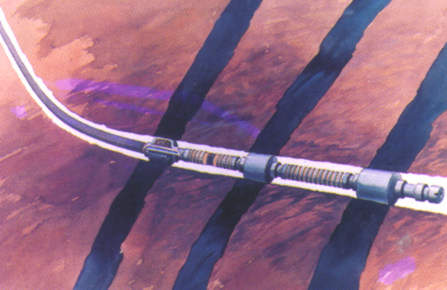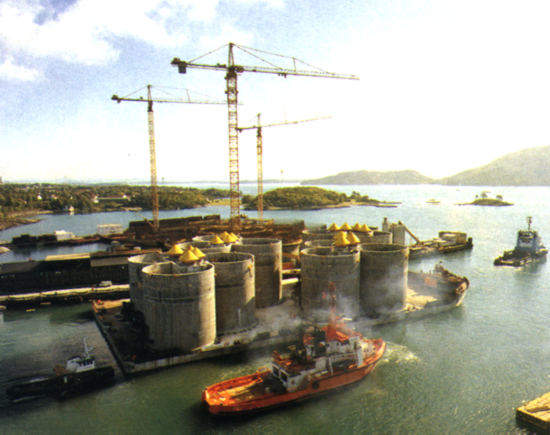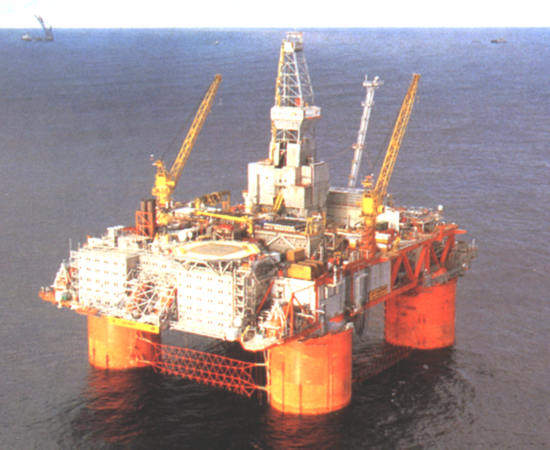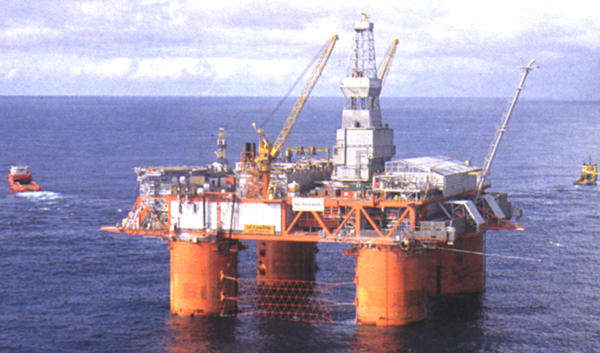The Snorre field lies in blocks 34 / 4 and 34 / 7, approximately 200km west of Floro in the Norwegian North Sea.
Block 34 / 4 was awarded in 1979, while block 34 / 7 was awarded in 1984.
The Snorre field is operated by Statoil with a stake of 33.3%. Other partners in the project include Petoro with 30%, ExxonMobil Norge with 11.58%, Idemitsu Petroleum with 9.6%, RWE-Dea Norge with 8.28%, Total E&P Norge with 6.17% and Amerada Hess Norge 1.03%.
The Snorre field has two platforms named Snorre A and Snorre B. Two satellite fields, Vigdis and the Vigdis extension, are also connected to the platforms.
Snorre A platform
Snorre A is an integrated production, drilling and quarters installation, which is moored to the seabed by 16 steel tethers and stabbed into four 5,700t concrete foundation templates.
The 30,000t steel hull was fabricated by Kvaerner Rosenberg and the subcontractor Belleli. It was mated to the 30,000t steel deck built by Aker Stord.
Installation was assisted by the M700 crane barge and installed by Rockwater.
The 2,400t subsea production system is located at a depth of 335m and was lifted by Saipem’s M7000 crane vessel in a tandem lift.
The guidelineless system allows six oil wells and four water injectors to produce up to 60,000 barrels a day.
Snorre A originally came onstream in August 1992.
Snorre B platform
Snorre B is a four-column semi-submersible platform with drilling, processing and accommodation facilities.
It is also equipped with a subsea production system.
Geology of Snorre
The Snorre reserves lie in the fluvial sands of the Lunde formation from the late Triassic period and the Statfjord formation is early Jurassic.
Snorre reserves
Estimates of proven and probable oil reserves have shown a positive trend, which has risen by almost 84% since the plan for development and operation was first presented in 1987.
Snorre has recoverable reserves of 1.4 billion barrels of oil, six billion cubic metres of gas and six million tonnes of natural gas liquids.
The original plan for Snorre put daily oil production capacity at roughly 186,305 barrels.
This was upgraded in 1997 to 245,000 barrels, with a further 115,000 barrels added when the process module for the Vigdis crude was installed, giving a daily capacity of 360,000 barrels per day.
Field life is expected to extend into 2020.
Oil and gas recovery
The drive mechanism is based on water alternating gas (WAG) injection down-flank in the entire Statfjord formation.
It is estimated that 41% of the stock tank oil originally in place in the field can be produced.
Snorre phase I
Plans called for Snorre to be developed in two phases. The first phase concentrated on the southern part of the field, which features 150 million cubic metres of recoverable oil reserves.
A subsea production system tied back to Snorre A platform is used for production.
Phase I of the Snorre development is based on 46 oil wells, comprising 36 drilled from the TLP (six predrilled and the other 30 drilled during production) and another ten at the subsea station.
Snorre phase II
Phase II of the development embraces the field’s northern flank, which was developed with the Snorre B platform.
The northern flank is thought to contain up to 25% of the field’s recoverable oil.
Snorre B came onstream in June 2001 from well C-5, sending fully processed crude through a 45km pipeline to the Statfjord B field for storage and transport.
Two further wells were then brought onstream, bringing production up to an expected level of 70,000 barrels per day.
Associated gas is injected into the reservoir or piped via the Snorre A platform to the Statpipe system.
Snorre B produces 113,000 barrels per day at peak. An estimated 362 million barrels of oil will be recovered from Snorre B.
New wells will be drilled to clarify whether additional recoverable oil is present in the area.
Statoil decided to invest $861m (Nkr5bn) for the modification and maintenance of the Snorre field in December 2009.
The developments will include increasing the accommodation capacity and the replacement of fire and gas alarm systems at the platform.
Snorre contracts
Statoil awarded subsea equipment contract to FMC Technologies in January 2010. The company will deliver the systems from 2011.
FMC awarded a $9.4m subcontract to Scana in March 2010 to supply finished machined riser forgings.
Scana is expected to deliver the equipment from the fourth quarter of 2010.
Aker was awarded a contract to carry out engineering and maintenance work for the offshore installations at the field in June 2010.
Technip received a €23m contract from Statoil in August 2010 to connect the Snorre A and B platforms through a 9km-long rigid steel flowline.
The work will also include installation of flexible risers. The entire work is scheduled for completion in the first half of 2012.










